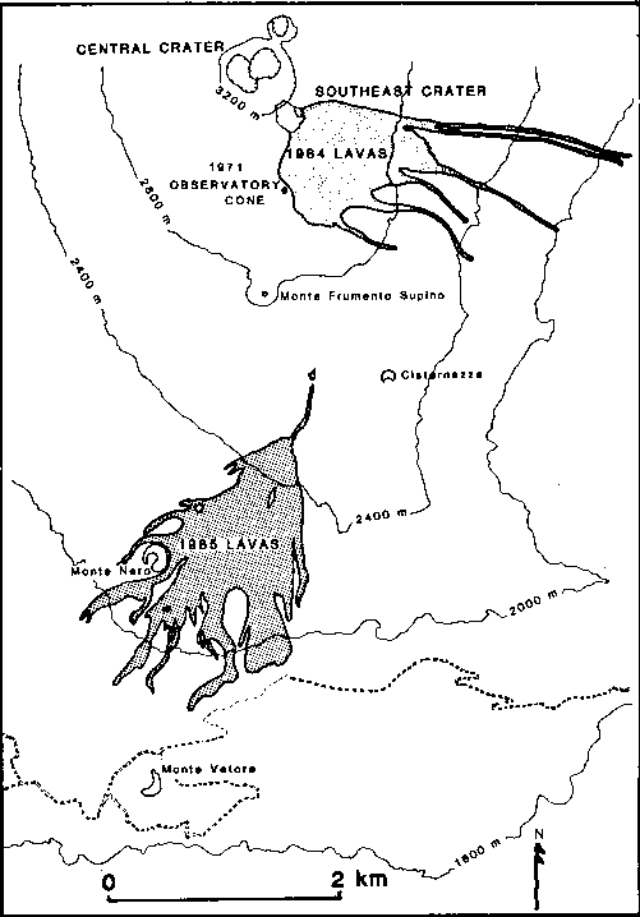Report on Etna (Italy) — July 1985
Scientific Event Alert Network Bulletin, vol. 10, no. 7 (July 1985)
Managing Editor: Lindsay McClelland.
Etna (Italy) Four-month eruption ends in mid-July
Please cite this report as:
Global Volcanism Program, 1985. Report on Etna (Italy) (McClelland, L., ed.). Scientific Event Alert Network Bulletin, 10:7. Smithsonian Institution. https://doi.org/10.5479/si.GVP.SEAN198507-211060
Etna
Italy
37.748°N, 14.999°E; summit elev. 3357 m
All times are local (unless otherwise noted)
"The eruption ended 13 July. The first phase (12 March-11 June) lasted 92 days, the second phase (13 June-13 July) lasted 31 days.
"The effusive activity that had shown new strength during the last days of the eruption greatly diminished on 12 July. Only one main effusive vent at 2,490 m elevation and two short-lived effusive vents in the lava field (at 2,300 and 2,600 m) remained active. The flows from the upper vent never descended below 2,400 m elevation and those from the lava field vents never below 2,100 m. From preliminary estimates, the area covered by lava was ~2.2 km2 and volume of lava produced was ~30 x 106 m3. The maximum width of the lava field is 1.5 km, the maximum length of flows, 1,830 m (figure 22).
Geological Summary. Mount Etna, towering above Catania on the island of Sicily, has one of the world's longest documented records of volcanism, dating back to 1500 BCE. Historical lava flows of basaltic composition cover much of the surface of this massive volcano, whose edifice is the highest and most voluminous in Italy. The Mongibello stratovolcano, truncated by several small calderas, was constructed during the late Pleistocene and Holocene over an older shield volcano. The most prominent morphological feature of Etna is the Valle del Bove, a 5 x 10 km caldera open to the east. Two styles of eruptive activity typically occur, sometimes simultaneously. Persistent explosive eruptions, sometimes with minor lava emissions, take place from one or more summit craters. Flank vents, typically with higher effusion rates, are less frequently active and originate from fissures that open progressively downward from near the summit (usually accompanied by Strombolian eruptions at the upper end). Cinder cones are commonly constructed over the vents of lower-flank lava flows. Lava flows extend to the foot of the volcano on all sides and have reached the sea over a broad area on the SE flank.
Information Contacts: R. Romano, IIV.


